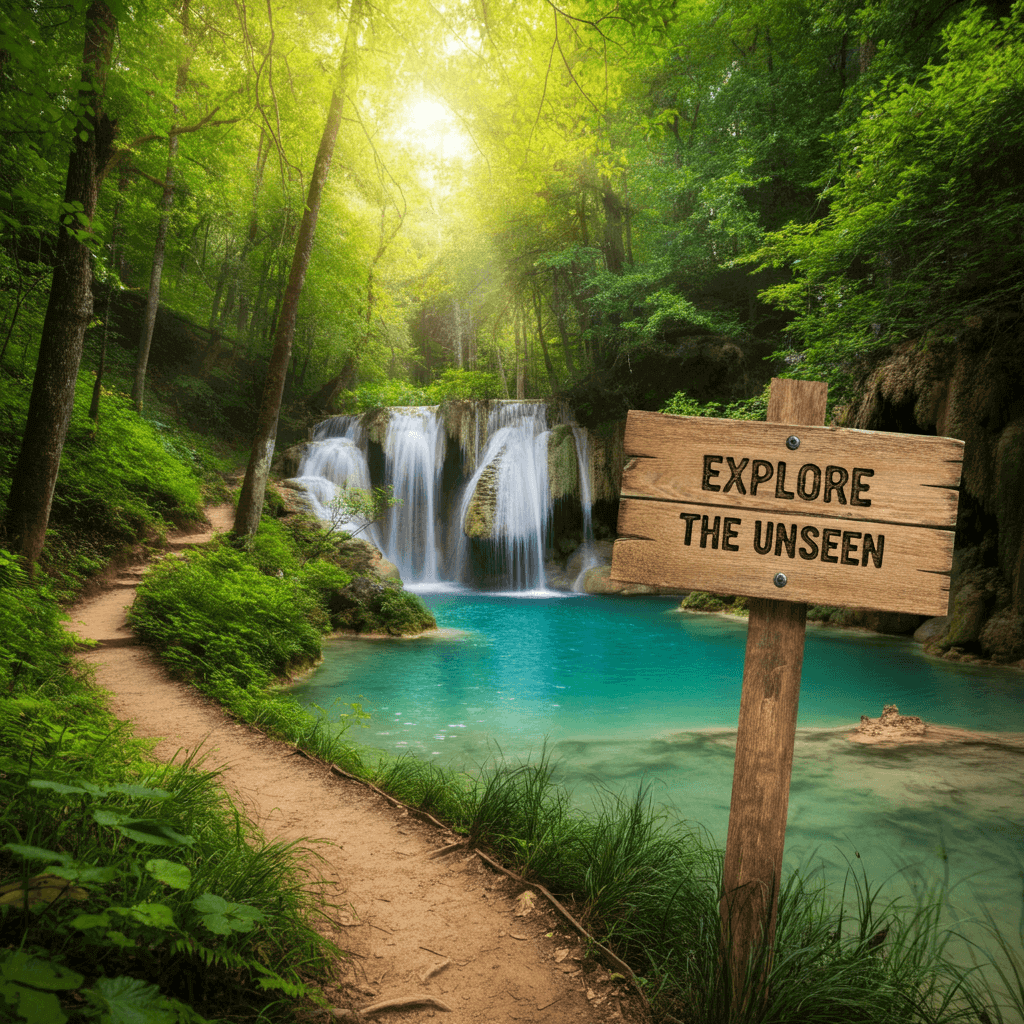
Exploring the world beyond popular tourist sites offers travelers a chance to forge unique memories, discover authentic cultures, and escape the crowds. In 2025, the quest for novelty has never been stronger as intrepid explorers seek unspoiled landscapes and under-the-radar communities. This guide will unveil ten off-the-beaten-path destinations that promise awe-inspiring vistas, immersive experiences, and deeper connections to the local way of life. Whether you’re a seasoned globetrotter or planning your first unconventional adventure, our comprehensive tips on planning, safety, and sustainability will equip you to journey responsibly and confidently into the road less traveled.
Why Choose Off-the-Beaten-Path Destinations?
Travelers who venture off the beaten path are rewarded with authenticity, solitude, and a deeper understanding of local traditions. Unlike crowded landmarks and well-trodden itineraries, these hidden gems offer moments of serendipity—chance encounters with friendly locals, untouched natural wonders, and festivals that have yet to be discovered by mass tourism. Embracing the unknown can also foster personal growth, encouraging adaptability and sparking creativity as you navigate unfamiliar terrain and connect with a diverse array of cultures.
Additionally, off-the-beaten-path travel aligns with sustainable tourism principles by dispersing economic benefits to lesser-known communities and reducing environmental strain on overcrowded hotspots. By choosing remote regions, you help local businesses thrive, support cultural preservation, and minimize your carbon footprint. This new era of conscious adventure empowers responsible explorers to make a positive impact while satisfying their wanderlust for genuine, one-of-a-kind experiences.

1. The Shetland Islands, Scotland
Perched off the northeast coast of Scotland, the Shetland Islands are a tapestry of rugged cliffs, windswept moors, and tranquil bays. Here, you can witness traditional Viking festivals, explore prehistoric stone circles, and hike along dramatic sea stacks that frame the North Atlantic. Wildlife enthusiasts will delight in spotting puffins, seals, and otters against a backdrop of vast skies and rolling hills. With fewer tourists than the Scottish Highlands, Shetland offers a serene escape where history and nature converge in a landscape shaped by millennia of geological forces.
2. Colchagua Valley, Chile
Nestled between the Andes and the Pacific, Chile’s Colchagua Valley is famed for its world-class wines and agritourism experiences. Beyond the renowned vineyards, the valley boasts charming colonial towns, horse-riding excursions through olive groves, and immersive cooking classes featuring local ingredients like smoked paprika and heirloom maize. Cycle along vineyard trails at sunrise or learn ancient winemaking techniques at family-run estates. The combination of scenic landscapes, warm hospitality, and farm-to-table cuisine makes Colchagua a hidden treasure for oenophiles and cultural travelers alike.

3. Raja Ampat, Indonesia
Off the beaten path in the heart of the Coral Triangle, Raja Ampat is a diver’s paradise characterized by kaleidoscopic reefs and exceptionally biodiverse marine life. Accessible only by boat from Sorong, these remote Indonesian islands feature secluded beaches fringed with palm trees and crystal-clear lagoons teeming with manta rays, reef sharks, and hundreds of colorful fish species. Eco-friendly liveaboard cruises minimize environmental impact, while partnerships with local communities fund conservation projects. Whether snorkeling above vibrant coral gardens or kayaking through hidden mangrove channels, Raja Ampat delivers an otherworldly escape beneath and above the waves.
4. Matera, Italy
While Italy’s Amalfi Coast and Tuscany attract millions, Matera in the Basilicata region remains delightfully under the radar. Famous for its U201CSassiu201D cave dwellings carved into limestone cliffs, this UNESCO World Heritage site transports visitors back to prehistoric times. Wander through narrow alleys lined with rustic stone houses, visit ancient rupestrian churches adorned with Byzantine frescoes, and savor orecchiette pasta in family-run eateries. The city’s dramatic landscape becomes particularly enchanting at dawn and dusk, when the golden light accentuates the architectural marvels hewn from the earth.
5. Kutch Desert, India
Spanning 7,700 square miles in Gujarat, the Great Rann of Kutch is one of the world’s largest salt deserts. During the dry season, the flat expanse shimmers like a mirror beneath an endless sky. Seasonal festivals celebrate local handicrafts, especially vibrant textiles and embroidery produced by indigenous tribes. Camp under the stars in traditional tents, trek to the nearby white salt marsh, and witness the mesmerizing shift of colors at sunrise and sunset. This surreal, otherworldly landscape offers unmatched opportunities for photography and cultural immersion in India’s western frontier.
6. Siwa Oasis, Egypt
Tucked into Egypt’s western desert near the Libyan border, Siwa Oasis is a verdant sanctuary famed for its emerald springs and ancient ruins. Explore the Fortress of Shali—an ancient mud-brick settlement—or relax in natural hot springs amid palm groves. Local Berber traditions, including olive oil production and unique cuisine, can be experienced during homestays with community families. Stargazing here is truly extraordinary as light pollution fades to nothing, unveiling the celestial splendor of the Sahara night sky.
7. Picos de Europa, Spain
Hidden between Asturias, Cantabria, and Castilla y Leu00f3n, Spain’s Picos de Europa National Park showcases rugged limestone peaks, lush valleys, and glacial lakes. Hike remote trails like the Cares Gorge walkway, marvel at ancient bear forests, and sample hearty local cheeses such as Cabrales. Cottages known as casa rurales provide authentic homestay experiences, and medieval villages like Cangas de Onu00eds offer a glimpse into rural Spanish life. For adrenaline seekers, canyoning, kayaking, and rock climbing add excitement to this untamed region.
8. Taveuni, Fiji
Referred to as u201Cthe Garden Islandu201D, Taveuni is lush with rainforests, waterfalls, and untouched beaches. Located a short flight from Fiji’s main island, it remains blissfully uncrowded. Dive sites such as the Great White Wall exhibit stunning soft corals, while hiking trails lead to cascading falls in Bouma National Heritage Park. Indigenous communities welcome visitors to learn basket weaving and traditional firewalking ceremonies. Sustainable eco-resorts prioritize conservation, making Taveuni an ideal haven for nature lovers and cultural explorers.
9. Isla Holbox, Mexico
Off Mexico’s Yucatan Peninsula, Isla Holbox remains a low-key alternative to Cancu2019n and Playa del Carmen. The car-free island boasts pastel-colored houses, sandy streets, and pristine beaches. During summer months, bioluminescent plankton illuminate the shoreline at night, while whale shark season offers unforgettable swimming encounters. Cycle to remote coves, sample fresh ceviche at beachfront palapas, and watch flamingos forage in shallow lagoons. Holbox’s laid-back charm and abundant wildlife make it a true oasis for travelers seeking serenity and natural beauty.
10. Faroe Islands
Located between Iceland and Norway, the Faroe Islands are a cluster of 18 windswept islands offering pristine fjords, towering sea cliffs, and cascading waterfalls. Accessible by a scenic ferry ride from Denmark, the Faroes combine Nordic culture with remote wilderness. Hike to the iconic Trælanípan cliff, visit traditional knitwear workshops, and dine on farm-to-table seafood delicacies. With a network of tunnels and ferries connecting each island, you can craft an itinerary filled with coastal vistas, bird colonies, and warm hospitality from the islanders.
Planning Your Off-the-Beaten-Path Adventure
Research and flexibility are crucial when venturing to lesser-known destinations. Secure accommodations well in advance, especially if lodging options are limited to small guesthouses or homestays. Consult local tourism boards or community cooperatives for insider tips on transportation, seasonal variations, and cultural events. Maintain a flexible itinerary that allows time for delays, spontaneous detours, and unexpected opportunities. Remember, the essence of off-the-beaten-path travel is embracing unpredictability and fostering authentic experiences beyond rigid schedules.
Packing wisely is equally essential: bring versatile clothing suitable for local climates, sturdy footwear for diverse terrains, and basic first-aid supplies. Invest in a reliable multi-tool, compact water purifier, and solar charger for remote stays without reliable electricity. Digital tools such as offline map apps, translation software, and portable Wi-Fi devices can bridge communication gaps, but be prepared for intermittent connectivity in extremely remote areas.
Budgeting for hidden-gem journeys often involves allocating funds for local guides, permits, or community fees that support conservation and cultural preservation. Carry a mix of cash and cards, as ATMs may be scarce outside major cities. Engage with local operators to negotiate fair prices, and prioritize businesses that reinvest earnings into community development and ecological protection.

Responsible & Sustainable Travel Tips
Protecting the environments and communities you visit should be a top priority. Always follow Leave No Trace principles: dispose of waste properly, stick to designated paths, and avoid disturbing wildlife. Opt for eco-certified lodging that minimizes plastic use, treats wastewater responsibly, and sources energy sustainably. When possible, travel with local transportation, such as community-run buses or shared vehicles, to reduce carbon emissions and support neighborhood economies.
Cultural sensitivity enhances mutual respect and meaningful connections. Learn basic phrases in the local language, dress modestly according to customs, and ask permission before photographing people or ceremonies. Purchase authentic handicrafts directly from artisans to ensure fair compensation and help preserve traditional crafts for future generations.
Conclusion
Venturing off the beaten path in 2025 opens doors to extraordinary landscapes, untold histories, and genuine human connections. From the salt flats of Kutch to the fjords of the Faroe Islands, each destination rewards curious explorers with memories that transcend typical itineraries. By embracing sustainable practices, thoughtful planning, and cultural respect, your journey into hidden gems will be both enriching and responsible. Pack your sense of adventure, keep an open mind, and get ready to uncover the world’s best-kept secrets on your next unforgettable trip.

















No Comments